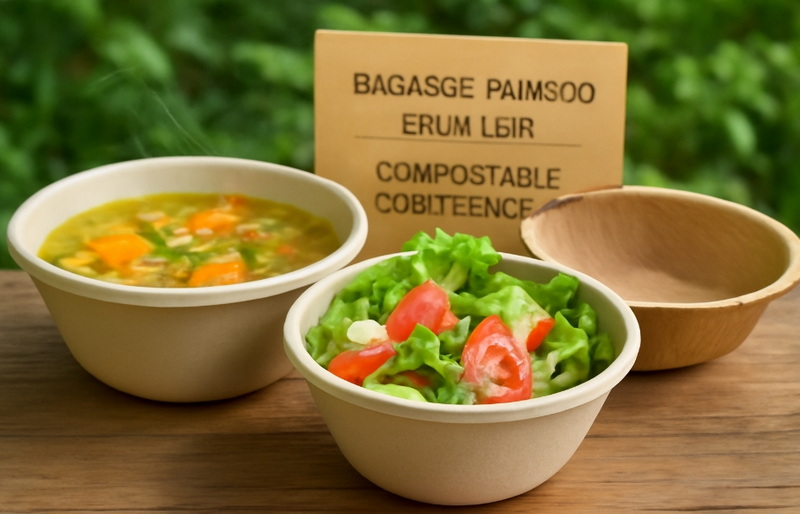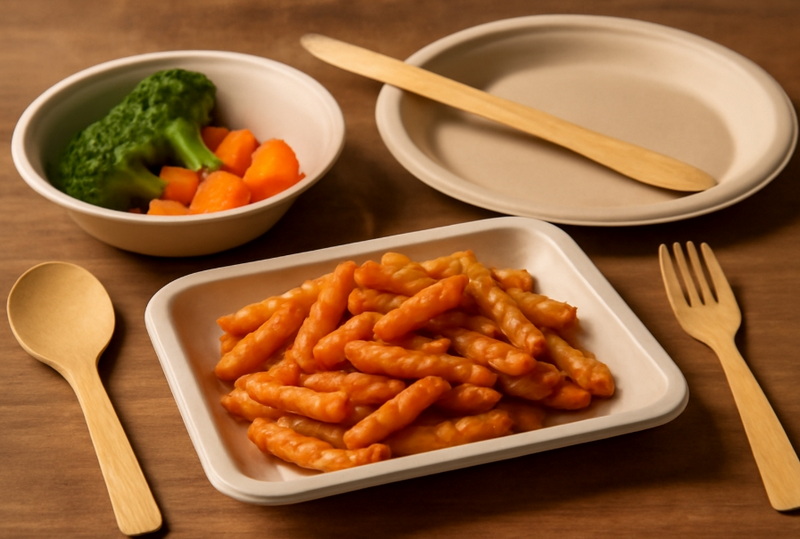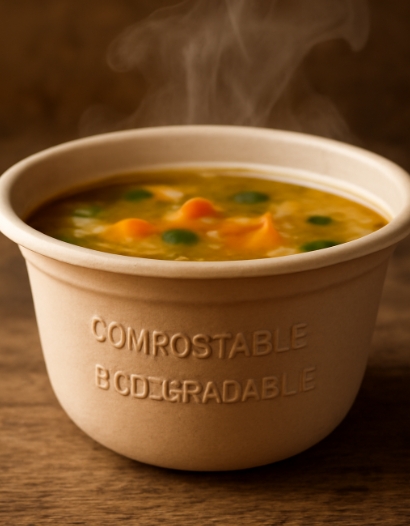
Content Menu
● What Are Sugarcane Pulp Bowls and Lids?
● The True Cost: Sugarcane Pulp vs. Plastic
>> Initial Production Costs
>> Bulk Purchasing and Economies of Scale
>> Long-Term and Hidden Costs
>> Cost-Saving Benefits Over Time
● Environmental Impact: A Comparative Analysis
>> Biodegradability and Compostability
>> Source Material and Resource Use
>> Carbon Footprint and Greenhouse Gas Emissions
>> Waste Management and Pollution
>> Health and Safety
● Performance and Practical Considerations
>> Durability and Functionality
>> Customization and Branding
>> Versatility
● Regulatory and Market Trends
● Conclusion
● FAQ
>> 1. What is the main environmental benefit of sugarcane pulp bowls and lids?
>> 2. Are sugarcane pulp products more expensive than plastic ones?
>> 3. Can sugarcane pulp bowls handle hot liquids as effectively as plastic?
>> 4. How do sugarcane pulp products impact human health compared to plastic?
>> 5. Are sugarcane pulp bowls and lids suitable for branding and customization?
As the world becomes more environmentally conscious, the debate between sugarcane pulp bowls and lids versus their plastic counterparts grows increasingly relevant. The environmental crisis caused by single-use plastics has prompted businesses and consumers alike to seek sustainable alternatives that do not compromise on quality or affordability. This comprehensive article explores the cost and environmental impact of sugarcane pulp products compared to traditional plastics, arming readers with the knowledge to make informed, eco-friendly choices.

What Are Sugarcane Pulp Bowls and Lids?
Sugarcane pulp bowls and lids are crafted from bagasse, the fibrous residue left after extracting juice from sugarcane. Once considered agricultural waste, bagasse is now transformed into sturdy, compostable food packaging. The manufacturing process involves refining the bagasse into a pulp, shaping it into containers, and drying it to create durable, lightweight products suitable for various food service applications.
Plastic bowls and lids, by contrast, are typically made from petroleum-based polymers such as polyethylene or polystyrene. These materials are popular for their low cost, versatility, and durability, but they pose significant environmental challenges due to their persistence in landfills and natural ecosystems.
The True Cost: Sugarcane Pulp vs. Plastic
Initial Production Costs
Plastic products are generally less expensive to produce initially, thanks to well-established manufacturing processes and the low cost of petroleum-based raw materials. This makes them attractive for businesses focused on minimizing immediate expenses.
Sugarcane pulp products, on the other hand, tend to have a slightly higher upfront cost. This is primarily due to the newer nature of the industry, specialized processing, and the premium placed on sustainable materials.
Bulk Purchasing and Economies of Scale
As the demand for sustainable packaging increases, the price difference between sugarcane pulp and plastic products diminishes. Bulk purchasing of sugarcane pulp bowls and lids can significantly lower the per-unit cost, making them more competitive for large-scale buyers.
The plastic industry benefits from decades of optimization and infrastructure, allowing costs to remain low even for smaller orders.
Long-Term and Hidden Costs
Plastic's hidden costs include environmental cleanup, landfill management, and potential regulatory fines associated with plastic waste and pollution. While these costs are not always reflected in the purchase price, they are borne by society over time.
Sugarcane pulp products avoid many of these hidden costs. Their compostability and biodegradability reduce waste management expenses and the risk of regulatory penalties as governments move to restrict single-use plastics.
Cost-Saving Benefits Over Time
The durability of sugarcane pulp bowls and lids means fewer replacements are needed, potentially lowering overall costs for businesses over the long term.
As the market for sustainable products grows, ongoing innovation and investment are expected to further reduce the cost of sugarcane pulp packaging.
Environmental Impact: A Comparative Analysis
Biodegradability and Compostability
Sugarcane pulp products are fully biodegradable and compostable, typically breaking down within a few months under the right conditions. This rapid decomposition returns nutrients to the soil and avoids the accumulation of persistent waste.
Plastic products, in contrast, can take centuries to decompose, contributing to long-term pollution in landfills and natural environments. Microplastics from degraded plastic items pose additional risks to wildlife and human health.
Source Material and Resource Use
Sugarcane pulp utilizes bagasse, a renewable byproduct of sugar production. This not only diverts agricultural waste from landfills but also reduces the need for virgin materials. Sugarcane is a rapidly renewable crop, maturing within a year and requiring minimal irrigation.
Plastic relies on non-renewable fossil fuels, contributing to resource depletion and greenhouse gas emissions during extraction and processing.
Carbon Footprint and Greenhouse Gas Emissions
The production of sugarcane pulp products generally requires less energy than plastics, resulting in a lower carbon footprint. Additionally, sugarcane cultivation absorbs carbon dioxide, helping to offset emissions from manufacturing.
Plastic production is energy-intensive and emits significant greenhouse gases, exacerbating climate change. The reliance on fossil fuels further compounds its environmental impact.
Waste Management and Pollution
Sugarcane pulp bowls and lids can be composted at home or in industrial facilities, reducing landfill burden and supporting circular economy practices.
Plastic products often end up as litter, polluting waterways and harming wildlife. Their persistence in the environment leads to cumulative ecological damage.
Health and Safety
Sugarcane pulp products are free from harmful chemicals such as BPA and phthalates, which are commonly found in plastics and can leach into food, especially when heated.
Plastic containers may pose health risks due to chemical migration, particularly when used with hot or acidic foods.

Performance and Practical Considerations
Durability and Functionality
Sugarcane pulp bowls and lids are surprisingly durable, capable of withstanding hot liquids and resisting deformation without the need for chemical coatings. They are microwave-safe and maintain their integrity during use.
Plastic bowls and lids are also durable but may leach chemicals when exposed to heat. Their resistance to liquids and structural stability is well-established, but often at the expense of environmental safety.
Customization and Branding
Both sugarcane pulp and plastic products can be customized with branding and designs, offering businesses flexibility in marketing and presentation.
Sugarcane pulp's natural texture and appearance also appeal to eco-conscious consumers, adding an element of sustainability to brand identity.
Versatility
Sugarcane pulp products are suitable for a wide range of applications, from hot soups to cold salads, and can replace plastic in most food service scenarios.
Plastic remains versatile but lacks the environmental credentials increasingly demanded by consumers and regulators.
Regulatory and Market Trends
Governments around the world are implementing bans and restrictions on single-use plastics, driving demand for sustainable alternatives like sugarcane pulp packaging.
Businesses adopting sugarcane pulp products can enhance their sustainability credentials, appeal to eco-conscious consumers, and future-proof their operations against tightening regulations.
Conclusion
Comparing sugarcane pulp bowls and lids with their plastic counterparts reveals clear advantages for the former in terms of environmental impact, long-term cost-effectiveness, and consumer safety. While plastic remains cheaper upfront, its hidden costs—environmental degradation, regulatory risks, and health concerns—make it a less attractive option in a sustainability-focused future. Sugarcane pulp products, derived from renewable resources and fully compostable, offer a practical, scalable solution for businesses and consumers seeking to reduce their ecological footprint without sacrificing performance or quality.

FAQ
1. What is the main environmental benefit of sugarcane pulp bowls and lids?
Sugarcane pulp bowls and lids are fully biodegradable and compostable, breaking down within a few months and returning nutrients to the soil. This significantly reduces landfill waste and environmental pollution compared to plastic, which can persist for centuries.
2. Are sugarcane pulp products more expensive than plastic ones?
Initially, sugarcane pulp products may cost slightly more due to newer manufacturing processes and smaller production scales. However, bulk purchasing and growing demand are narrowing the price gap, and the long-term savings from reduced waste management and regulatory risks often outweigh the initial investment.
3. Can sugarcane pulp bowls handle hot liquids as effectively as plastic?
Yes, sugarcane pulp bowls are naturally resistant to heat and do not require additional chemical coatings. They maintain their shape and integrity with hot foods and liquids, making them suitable for a wide range of food service applications.
4. How do sugarcane pulp products impact human health compared to plastic?
Sugarcane pulp products are free from harmful chemicals like BPA and phthalates, which are commonly found in plastics and can leach into food. This makes them a safer option for food contact, especially with hot or acidic foods.
5. Are sugarcane pulp bowls and lids suitable for branding and customization?
Absolutely. Sugarcane pulp products can be easily customized with logos, designs, and branding, offering businesses a sustainable way to promote their identity while meeting consumer demand for eco-friendly packaging.

















